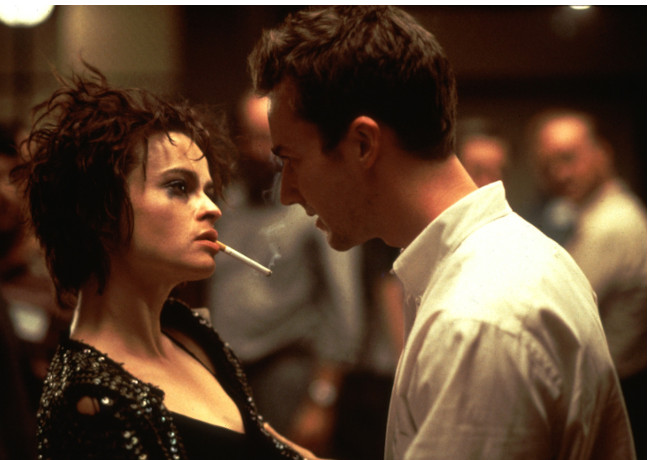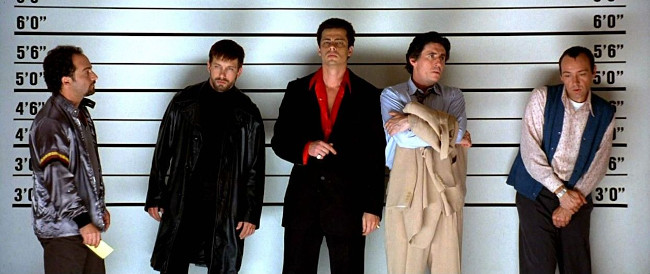Some Kind of Abstraction: A Look at Unreliable Narrators in Movies

Traditional storytelling relies on a coherent linear plot that ends with a satisfying conclusion -- ideally leaving no questions for the audience. However, the ambiguous storytelling offered by an unreliable narrator often leaves an audience with a lot more to think about, examine, and analyze.
The execution of an unreliable narrator can vary; however, an unreliable narrator’s story is never trustworthy. They may simply be impaired in such a way that they are unable to give an accurate account of events in which they are involved.
Here, I intend to examine unreliable narrators in film and discuss how their fallibility creates a depth that can drastically alter the way a story is told. Since a discussion of unreliable narrators concerns examining crucial plot elements, this article will contain spoilers for “American Psycho,” 2000, “Fight Club,” 1999, “Forrest Gump,” 1994, “Joker,” 2019, “The Usual Suspects,” 1995 and “Rashomon,” 1950.
The simplest use of an unreliable narrator is for the purpose of a plot twist. Typically, the protagonist becomes aware that they are an unreliable narrator. “Fight Club” and “Joker” use this technique.
These films don’t call into question the events of the film, but simply recontextualize them as the audience and protagonist become aware of their misinterpretation. In “Joker,” the audience is shown a budding romance between Arthur Fleck and a woman in his apartment complex. However, later in the film, when Fleck goes to her for help, she acts like she doesn’t know him.
This is because she actually doesn’t. A brief montage reveals the relationship to be imagined. This is a crushing moment for Fleck, which serves as a catalyst for his transformation into the Joker and his movement into the final act of the film.
“Fight Club” utilizes this similarly in the existence of Tyler Durden, who is revealed to be the protagonist’s alter ego. The narrator, often referred to as Jack, suffers from dissociative identity disorder, more commonly known as multiple personality disorder. Throughout the film, Durden is presented as a separate character, until we discover that this simply is not the case.

Contrary to the term of an “unreliable” narrator, these films don’t intend for viewers to doubt the narrator’s accounts, aside from the ways the character deceived themselves.
There is certainly an argument that even if not intended, the presentation of their characters as unreliable can raise doubt about sequences in each film. Fleck being violently assaulted in the beginning of “Joker” could reasonably be read differently than how the scene is presented.
The assault, which ends in the death of three men, is presented as self-defense, considering these men harass and start beating Fleck. However, if we reevaluate this scene as Fleck misremembering the event as a means of justifying his actions, much of the film is recontextualized and the overall messaging greatly shifts.
In this reading, “Joker” is a film that presupposes that the mentally-ill are violent, instead of one that depicts the mentally-ill as being abandoned and driven to violence.
The ambiguity in “Fight Club” can be seen in its ending. In order to kill Durden, Jack shoots himself in the mouth. Jack survives this injury and goes on to watch as Durden’s “Project Mayhem” plan comes to fruition.
The film suggests Jack performed a sort of handgun lobotomy, presumably killing the part of his brain in which Durden resided.
While there are cases of people who have survived being shot in the head, it seems far-fetched to presume the shot only hit one specific part of his brain.
Even more far-fetched is the idea that Jack got up and began talking again as though he didn’t have a gaping hole in the side of his head, as the film depicts.

Jack dying is the most obvious alternate reading of that scene. Even if we do assume that Jack survived, there is no real confirmation as to which personality took control of Jack’s body.
The film depicts Durden’s “body” falling to the ground -- which would imply the death of the personality, but there is nothing to say his imaginary body wasn’t killed, because the Durden persona took residence in Jack’s body completely.
The next trend of use of unreliable narrators comes in the form of films focusing on perspective. These films examine the different ways in which people look at situations and as such, much of their commentary focuses on this aspect.
“Forrest Gump,” “The Usual Suspects” and “Rashomon” exemplify this. “Rashomon” is an Akira Kurosawa film and a terrific example of an unreliable narrator, as it depicts the murder of a man and the rape of his wife from the perspective of four different witnesses.
These films don’t prioritize the audience determining what is or isn’t true, but more so invite the audience to examine their perspective in contrast to the characters.
“The Usual Suspects” shows this through the police interrogation of the character Verbal, one of five criminals involved in a deadly shootout. Verbal recounts the story leading up to the shootout as the police try to figure out its purpose and the identity of the elusive crime boss Keyser Soze.
At the end of the film, the detective interrogating Verbal realizes the entire story he and the audience were presented was a fabrication by Verbal -- who is in reality Keyser Soze -- and he gets away scot-free.

Verbal being portrayed as a cowardly conman plays into his fabrication and the “don’t judge a book by its cover” takeaway.
It would be impossible to determine what truly happened in the film as we only have one account by a man who was lying from the outset.
All four of the people depicted in “Rashomon” are morally objectionable. None of the versions of the story paint any of the people, be it victim or perpetrator, to be a “good guy.” The different sides of this story are recounted by a woodcutter and a monk, to a commoner, and the morally bankrupt nature of the story grants three different reactions from the three men.
The monk finds himself to lose faith in humanity; the woodcutter takes a similar tact, but unlike the monk is shown to be not so innocent. The commoner seems to take it as the nature of the world and embraces this reality.
Trying to piece together “what actually happened” in “Rashomon” is a fruitless endeavor, and the point of the film is to examine the nature of truth and justice in the framework the film presents.
“Forrest Gump” is another film in which the focus is not the events themselves, but the meaning which the audience derives from them. Forrest Gump has a mental disability and the film depicts his journey through life placing him in the center of a number of incredulous and historically significant events.
Gump is an unreliable narrator in that his disability often cuts through the filter of cynicism and broader social context through which the audience views the film. Gump misinterprets Jenny’s sexually abusive father as a man who “really loves” his kids; however, the audience is able to see clearly that he's an alcoholic who has been abusing her.

Gump describes events that seem far-fetched, such as his founding of the Bubba Gump Shrimp company, his journey running across America several times, and meeting Elvis and inspiring the King’s signature dance style.
“Forrest Gump” is retelling a tumultuous time in American and world history through a lens which most people don’t have a frame of reference. You can sit through the film and scrutinize the plot but to do so would largely defeat the purpose.
While parts of Gump’s story may seem unreasonable, there are also elements that would indicate some of the events are true.
For example, when Gump recounts meeting President Nixon, he mentions that the president arranged for them to have better accommodations, relocating to the Watergate Hotel. The audience is then shown Gump calling in the Watergate break-in. However, Forrest glosses over this fact in his narration. To him, this incredibly important historical event is little more than an innocuous detail.
The film's main point is examining perspective and how it shapes our outlooks on life. Jenny and Lieutenant Dan are miserable. Despite Gump suffering in many of the same ways, he sees past much of the misery that engulfs them.
One interesting reading of the film is that Forrest is the presence of God in the lives of others. In this interpretation, all of the events in the film are true, but Forrest is a stand-in for a divine influence on normal people.
It could be framed in the way “Sympathy for the Devil” by the Rolling Stones frames the devil’s involvement in historical events like the Bolshevik Revolution. Instead of “Sticking round St. Petersburg,” Gump was helping Lieutenant Dan cope with his lost sense of purpose following his survival of the Vietnam War.

Unreliable narrators can entirely alter the frame of the film and color the commentary. “American Psycho” is a film that does this. The film follows Patrick Bateman, a businessman, as he falls further into bloodlust. Bateman is a psycho not in just the colloquial sense of being “crazy” but a character who literally suffers from psychosis.
His retelling of the story can’t be trusted, as he will see and hear things that aren’t there. What makes “American Psycho” so intriguing is the ambiguity as to how many people Bateman killed, if any.
Many sequences in the film are absurd and would undoubtedly get Bateman caught were they real. Such as his running through his apartment complex in his underwear covered in blood, as he chases a prostitute while wielding a chainsaw; or openly shooting a man in the lobby of an office building.
In addition, Bateman’s secretary comes across his notebook, which is filled with depictions of murder, including kills shown on screen. Bateman is shown taking antipsychotics as part of his daily routine and before some lethal encounters such as the one with Paul Allen.
As the film goes on, Bateman becomes more and more paranoid about getting caught, reflected in the character of Detective Kimball who investigates Paul’s disappearance and frequently alludes to knowing things he couldn’t possibly have known unless present for the depicted killing -- indicating he may be a figment of Bateman’s paranoia.
The film examines themes of a shallow corporate culture of social hegemony, where people are interchangeable. It depicts a social structure where elites treat the common man as disposable with a commentary on mental health and consumer culture. Which of these commentaries takes precedent largely comes down to whom you think Bateman actually killed.
For example, if the only murders that actually happened in “American Psycho” were Bateman’s murder of homeless men and prostitutes, the meaning of the film skews more towards a commentary on the social elite’s abuse of the lower classes. This reading emphasizes the film’s theme of the rich treating the poor as disposable and being able to kill them with impunity.

If you read the film with the assumption that Bateman killed Paul Allen, it takes a harsher stance toward a commentary of social hegemony in corporate culture. All of these businesspeople are so similar that they wouldn’t even notice if one of their own went missing. They already mistake their peers for other people.
The reading in which none of Bateman’s kills occur emphasizes a commentary on lacking mental health support and simply depicts a man going insane. Bateman wants to be stopped, but he can’t because he hasn’t actually done anything. He simply needs help, and feels trapped in a world where he is successful by social standards, but feels unfulfilled.
The point is that “American Psycho” -- and all of these films -- are granted a complex level of depth thanks to their leveraging of an “unreliable” narrator. What each viewer takes away from any of these films can be vastly different depending on their personal perspective -- an interesting parallel to the way unreliable narrators riff on perspective themselves.
Author Bio:
Garrett Hartman is a contributing writer at Highbrow Magazine.
For Highbrow Magazine































































































































































































































































































































